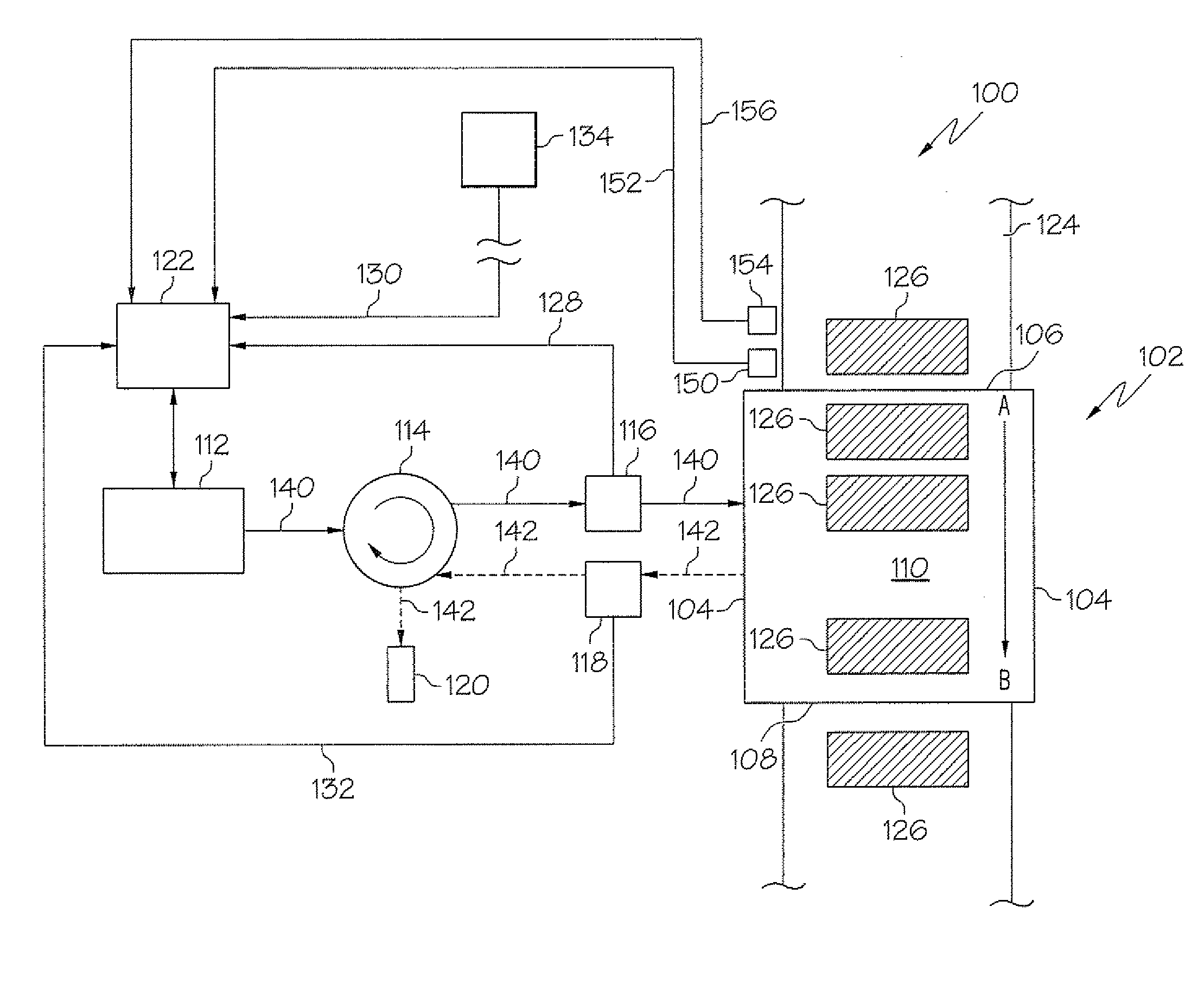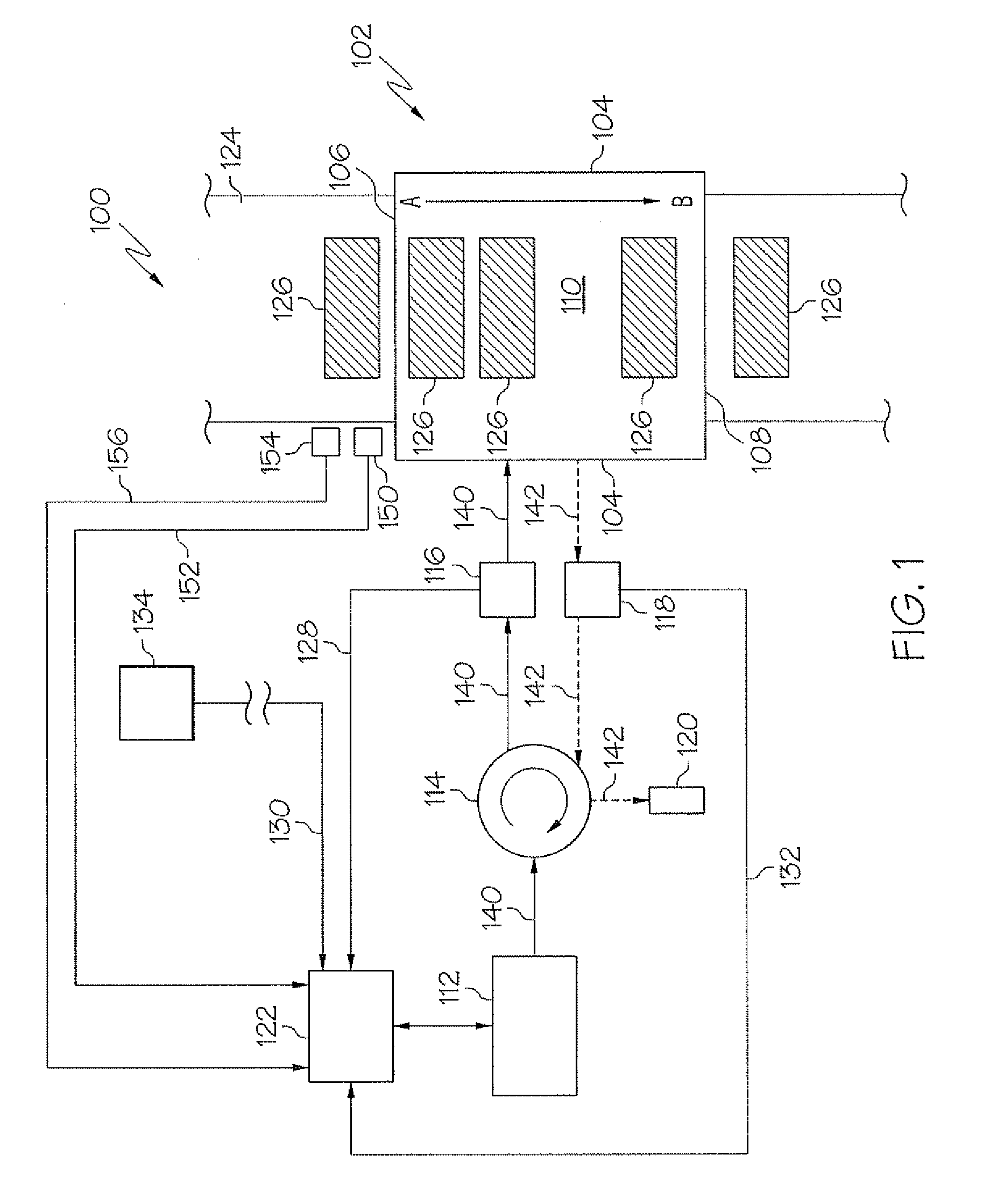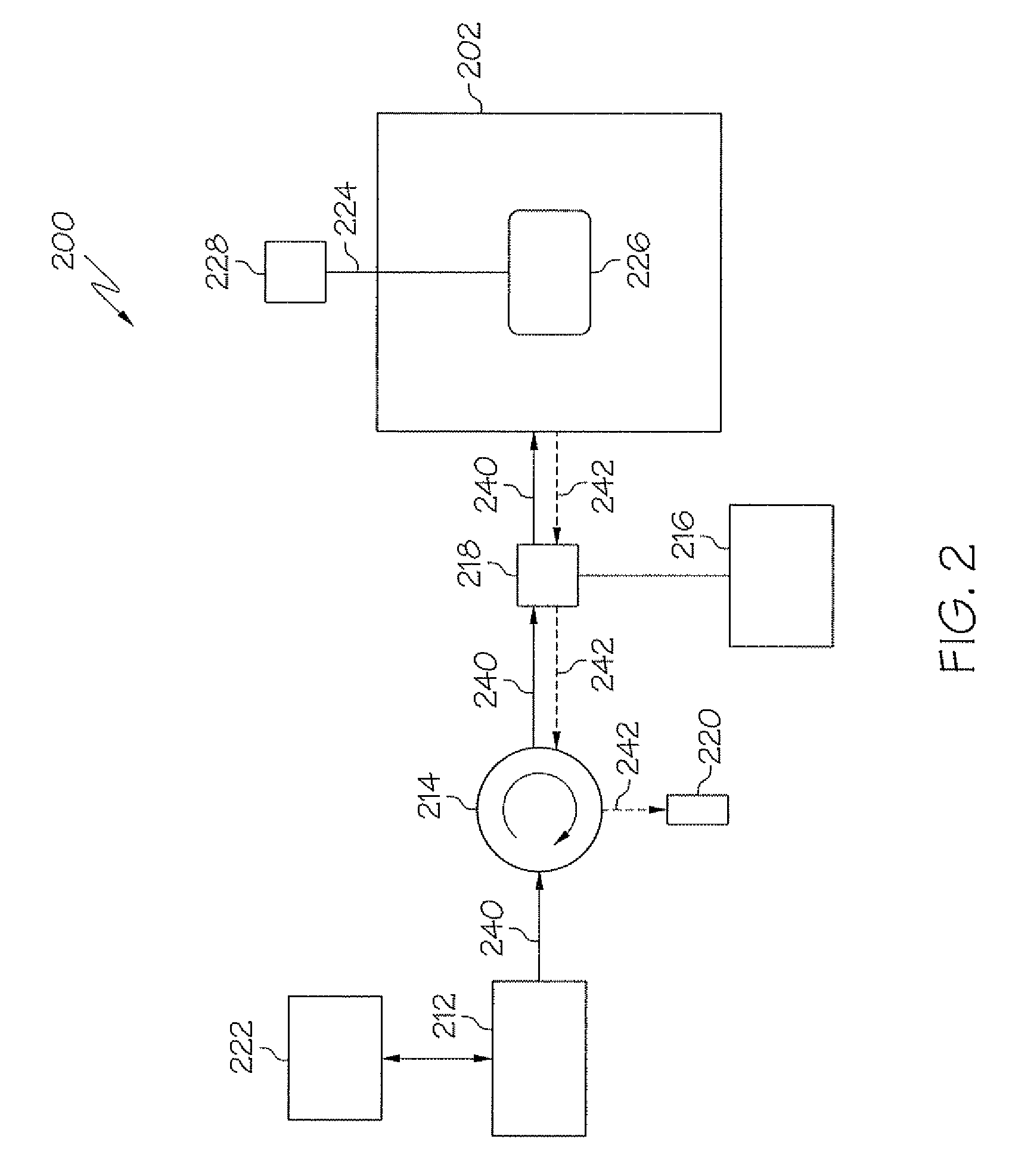Methods and Apparatus for Drying Ceramic Green Bodies with Microwaves
a technology of ceramic green bodies and microwaves, which is applied in the direction of temperatue control, hot plate heating arrangements, and combination processes, etc., can solve the problems of inconsistent product quality, high energy consumption, and temperature variations between individual ceramic green bodies
- Summary
- Abstract
- Description
- Claims
- Application Information
AI Technical Summary
Benefits of technology
Problems solved by technology
Method used
Image
Examples
Embodiment Construction
[0016]Reference will now be made in detail to FIG. 1 which shows a microwave dryer for heating green ceramic bodies according to one embodiment shown and described herein. The microwave dryer generally comprises a microwave heating chamber, a microwave source, a transmitted power sensor, a reflected power sensor and a programmable logic controller. The various elements of the microwave dryer, systems employing the microwave dryer and methods for heating green ceramic bodies will be discussed in further detail herein. Whenever possible, the same reference numerals will be used throughout the drawings to refer to the same or like parts.
[0017]As illustrated in FIG. 1, a microwave dryer 100 for heating green ceramic bodies generally comprises a microwave source 112, a microwave heating chamber 102, a programmable logic controller (PLC) 122, a transmitted power sensor 116 and a reflected power sensor 118.
[0018]The microwave heating chamber 102 generally comprises an entrance 106, an exit...
PUM
| Property | Measurement | Unit |
|---|---|---|
| frequency | aaaaa | aaaaa |
| frequency | aaaaa | aaaaa |
| temperatures | aaaaa | aaaaa |
Abstract
Description
Claims
Application Information
 Login to View More
Login to View More - R&D
- Intellectual Property
- Life Sciences
- Materials
- Tech Scout
- Unparalleled Data Quality
- Higher Quality Content
- 60% Fewer Hallucinations
Browse by: Latest US Patents, China's latest patents, Technical Efficacy Thesaurus, Application Domain, Technology Topic, Popular Technical Reports.
© 2025 PatSnap. All rights reserved.Legal|Privacy policy|Modern Slavery Act Transparency Statement|Sitemap|About US| Contact US: help@patsnap.com



